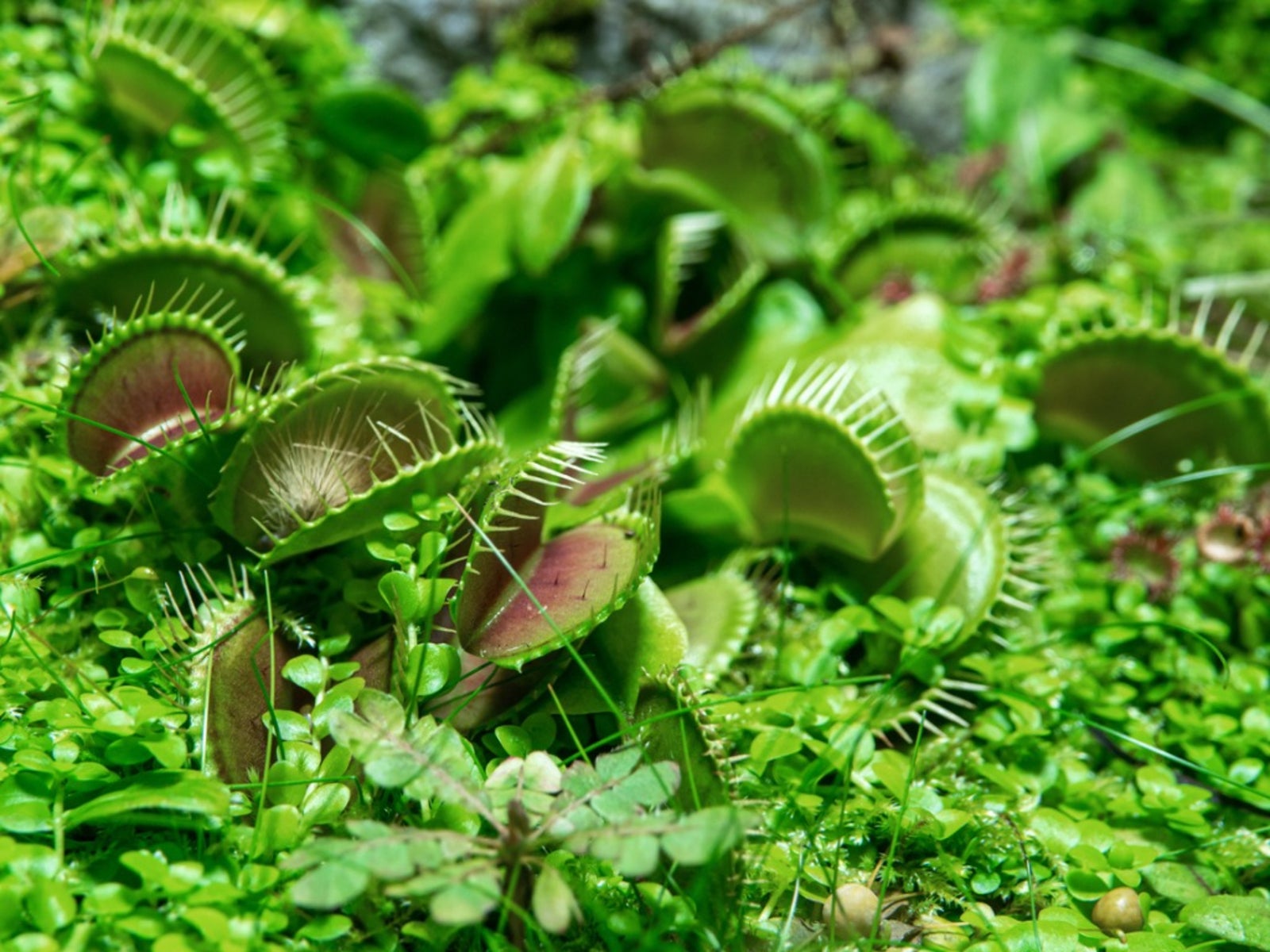Carnivorous Plant Gardens: How To Grow A Carnivorous Garden Outside


Carnivorous plants are fascinating plants that thrive in boggy, highly acidic soil. Although most carnivore plants in the garden photosynthesize like “regular” plants, they supplement their diet by eating insects. The world of carnivorous plants includes several species, all with their own unique growing conditions and insect trapping mechanisms. Some have highly specialized needs, while others are relatively easy to grow. Here are a few general tips for creating a carnivorous plant garden, but be prepared for a certain amount of trial and error.
Carnivorous Plants in the Garden
Here are the most common species for carnivorous plant gardens: Pitcher plants are easy to identify by a long tube, which contains liquid that traps and digests insects. This is a large group of plants that includes American pitcher plant (Sarracenia spp.) and tropical pitcher plants (Nepenthes spp.), among others. Sundews are attractive little plants that grow in various climates around the world. Although the plants appear to be innocent, they have tentacles with sticky, thick drops that look like nectar to unsuspecting insects. Once victims are trapped, wiggling to extricate themselves from the goo only makes matters worse. Venus fly traps are fascinating carnivorous plants that capture pests by way of trigger hairs and sweet smelling nectar. A single trap turns black and dies after capturing three or fewer insects. Venus fly traps are common in carnivorous plant gardens. Bladderworts are a large group of rootless carnivorous plant that live mostly beneath the soil or submerged in water. These aquatic plants have bladders that very efficiently and quickly trap and digest small insects.
How to Grow a Carnivorous Garden
Carnivorous plants require wet conditions and won’t survive very long in regular soil found in most gardens. Create a bog with a plastic tub, or make your own pond with an adequate liner. Plant carnivorous plants in sphagnum moss. Look specifically for products marked “sphagnum peat moss,” which is available at most garden centers. Never irrigate carnivorous plants with tap water, mineral water or spring water. Well water is generally okay, as long as the water hasn’t been treated with a water softener. Rainwater, melted snow, or distilled water is safest for irrigating carnivorous plant gardens. Carnivorous plants need more water in summer and less in winter. Carnivorous plants benefit from direct sunlight for most of the day; however, a little afternoon shade can be a good thing in very hot climates. Insects are usually available in carnivorous plant gardens. However, if insects seem to be in short supply, supplement with a very dilute solution of organic fertilizer, but only when the plants are actively growing. Never try to feed carnivorous plants meat, as the plants are unable to digest complex proteins. Outdoor carnivorous gardens in cold climates may need protection, such as a layer of loose straw covered with burlap or landscape cloth to keep the straw in place. Be sure the covering allows free flow of rainwater.
Sign up for the Gardening Know How newsletter today and receive a free copy of our e-book "How to Grow Delicious Tomatoes".

A Credentialed Garden Writer, Mary H. Dyer was with Gardening Know How in the very beginning, publishing articles as early as 2007.